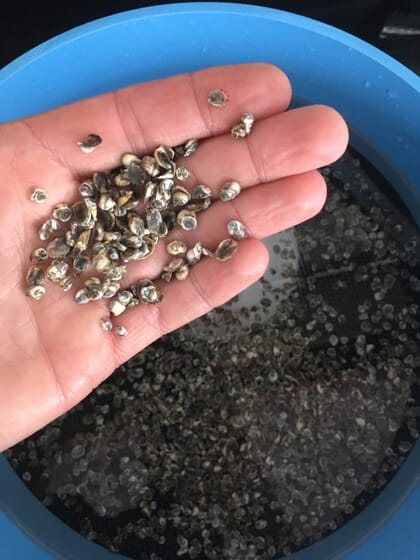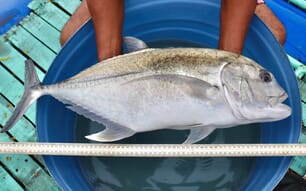
The $8.8 million aquaculture industry in New York state depends on shellfish hatcheries for seed stock every year. But spawning in conventional hatchery operations produces more larvae than can be used for seeding – causing hatchery inefficiency and creating waste from viable shellfish.
A new research project lead by aquaculture specialist Gregg Rivara of Cornell Cooperative Extension Suffolk County is looking at ways to preserve those extra larvae – or broodstock – using cryoprotectants.
The initiative is one of eight new research projects across the state that New York Sea Grant (NYSG)—a collaboration between Cornell University and the State University of New York – is supporting through National Oceanographic and Atmospheric Administration (NOAA) funding.
Rivara aims to find the easiest way to use cryoprotectants to keep the broodstock alive at a very low temperature so they can be used for future seedings. Doing so could increase efficiency and economic returns for shellfish hatcheries – which could have a ripple effect across the industry.

© Gregg Rivara
“Shellfish hatcheries spend considerable labour, energy and phytoplankton conditioning adult shellfish to affect out-of-season spawning,” said Rivara. “Low temperature storage of excess larvae would allow a hatchery to recoup the effort in conditioning and spawning, as well as act as an insurance plan if a meltdown in larval rearing occurred,” Rivara added.
“Rather than spawn a new batch of broodstock, they could reanimate the stored larvae and raise these larvae to the nursery phase.”
Rivera’s project is one of eight new research projects across the state that NYSG is supporting with $1.3 million in funding. CCE Suffolk County will receive $126,170 over two years for the initiative.
Other projects in NYSG’s most recent research suite, which are led by principal investigators at Stony Brook University, Hofstra University, the University at Buffalo and SUNY College of Environmental Science and Forestry, spotlight issues including fish and shellfish habitat, oyster restoration and rip currents education.




